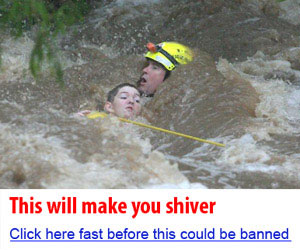Best Survival Tips and Tricks
When it comes to survival, being prepared can make the difference between life and death. Whether you’re an experienced outdoorsman or someone new to the concept of survival, having a solid understanding of the best tips and tricks can ensure your safety in challenging situations. In this article, we will delve into the most essential survival skills that everyone should know, from building shelters to finding food and water.
1. Understanding the Basics of Survival
Before diving into specific techniques, it’s crucial to grasp the basic principles of survival. The rule of threes provides a simple yet powerful framework:
- Three minutes without air – Your immediate priority is ensuring you have a clear airway and are breathing. This is why it’s essential to know how to perform CPR and other emergency first aid techniques.
- Three hours without shelter – In extreme weather conditions, exposure can be deadly. Your next focus should be on finding or creating shelter to protect yourself from the elements.
- Three days without water – Hydration is critical. Finding a reliable source of water is vital, and knowing how to purify it is equally important.
- Three weeks without food – While food is less of an immediate concern, knowing how to forage, hunt, or fish can sustain you in the long run.
2. How to Build a Shelter
Creating a shelter is one of the most important survival skills. A well-constructed shelter will protect you from the elements, conserve body heat, and provide a sense of security. There are various types of shelters you can build depending on the environment and available materials:
- Lean-To Shelter: Ideal for forested areas. Find two sturdy trees close together, and use long branches to create a frame. Cover the frame with leaves, grass, and other vegetation to insulate it.
- Debris Hut: Perfect for cold environments. Construct a simple frame from sticks and cover it with leaves, moss, and other insulating materials. Crawl inside to conserve body heat.
- Snow Cave: In snowy conditions, dig into a snowdrift and create a small cave. Ensure proper ventilation to avoid suffocation.
3. Finding and Purifying Water
Water is essential for survival, but drinking untreated water can lead to serious illness. Here’s how to find and purify water in the wild:
- Natural Sources: Streams, rivers, and lakes are the best options. However, be cautious of stagnant water, which may contain harmful bacteria.
- Collecting Rainwater: Use large leaves, tarps, or even your clothing to collect rainwater. This is usually safe to drink without purification.
- Purification Methods: Boiling water for at least one minute kills most pathogens. If boiling isn’t an option, consider using purification tablets or filtering through a cloth and adding a few drops of iodine or bleach.
4. Starting a Fire
Fire provides warmth, light, and a way to cook food and purify water. It’s also a powerful psychological tool in a survival situation. Here are some key methods to start a fire:
- Fire by Friction: Using a bow drill or hand drill, rub wood together to create an ember, which you can then transfer to tinder and blow into flames.
- Flint and Steel: Strike flint against steel to create sparks. This method is reliable in most conditions and works well with dry tinder.
- Magnifying Glass: On sunny days, focus sunlight through a magnifying glass onto dry tinder to ignite it. This method requires patience but is effective in the right conditions.
5. Foraging for Food
Finding food in the wild requires knowledge of edible plants, insects, and animals. Here’s how to forage safely:
- Edible Plants: Learn to identify common edible plants in your area, such as berries, nuts, and leafy greens. Always avoid plants with milky sap, as they are often toxic.
- Insects: Insects are a great source of protein. Grasshoppers, crickets, and ants are safe to eat when cooked.
- Fishing and Trapping: Craft simple fishing gear from natural materials or set up snares to catch small animals. Ensure you understand the basics of these techniques before heading into the wild.
6. Navigation Without a Compass
Getting lost is a common danger in survival situations. Knowing how to navigate without a compass can be a lifesaver:
- Using the Sun: In the northern hemisphere, the sun rises in the east and sets in the west. Use this to orient yourself.
- Stars: The North Star (Polaris) is a reliable indicator of true north in the northern hemisphere. In the southern hemisphere, use the Southern Cross constellation.
- Natural Landmarks: Pay attention to rivers, mountains, and other landmarks that can guide you in the right direction.
7. Basic First Aid
Injuries are almost inevitable in survival scenarios. Knowing basic first aid can prevent minor wounds from becoming life-threatening:
- Treating Cuts and Scrapes: Clean the wound with purified water, apply an antiseptic if available, and cover with a clean bandage.
- Splinting Broken Bones: Use sturdy sticks and cloth to immobilize the injured limb. Avoid moving the person until professional help arrives.
- Dealing with Hypothermia: If someone is suffering from hypothermia, remove any wet clothing, wrap them in warm, dry materials, and provide warm liquids if they are conscious.
8. Signaling for Help
When you’re stranded, signaling for help can increase your chances of rescue:
- Fire and Smoke: Build a signal fire in an open area. Use green branches to create smoke, which is more visible from a distance.
- Reflective Surfaces: Use a mirror, metal object, or even a smartphone screen to reflect sunlight and signal aircraft or distant rescuers.
- Ground Signals: Arrange rocks, branches, or other materials in large, visible patterns such as “SOS” or arrows pointing towards your location.
9. Mental Preparedness
Survival isn’t just about physical skills; mental resilience is equally important. Stay calm, assess your situation, and prioritize your tasks. Keeping a positive mindset can help you overcome fear and stress, making it easier to survive challenging conditions.
Conclusion
Mastering these survival tips and tricks can greatly increase your chances of staying safe in the wild. From understanding the basic principles of survival to building shelters, finding water, and signaling for help, each of these skills is crucial in a survival situation. Remember, preparation is key, and having the right knowledge can mean the difference between life and death. Stay safe, stay prepared, and always be ready for the unexpected.



